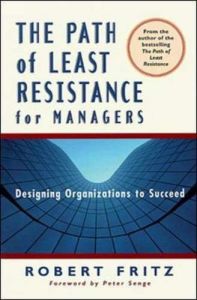Join getAbstract to access the summary!

Join getAbstract to access the summary!
Robert Fritz
The Path of Least Resistance for Managers
Designing Organizations to Succeed
Berrett-Koehler, 1999
What's inside?
Engineers and scientists are guided by the laws of nature. What makes corporate executives think they’re exempt?
Recommendation
Robert Fritz takes a novel approach to corporate organizational theory by framing his book around the laws of nature. Fritz is especially attached to the law that states that energy follows the path of least resistance, and in this book, he urges managers to utilize this principle in reshaping their organizations. Once you get past this conceptual foundation, however, the advice that’s offered here will sound pretty familiar to anyone acquainted with the basics of strategic planning. Form a central vision, create attainable goals, break goals down into smaller steps, assess your results, adjust your strategies: These techniques are all mentioned. But Fritz’s adoption of scientific and engineering principles for management purposes, combined with the accompanying charts and examples, make the book an engaging read, despite the less-than-original conclusions. getAbstract recommends this book to executives, managers and individuals who are looking for a new, if slightly theoretical, view of how to organize their companies or their lives.
Summary
About the Author
Robert Fritz is the founder of the field of structural consulting. With Peter Senge and Charlie Kiefer, he is a founding partner of Innovation Associates. He also founded the Fritz Consulting Group and has consulted with many Fortune 500 companies. He previously wrote The Path of Least Resistance and Creating: Learning to Become a Creative Force in Your Own Life.
















Comment on this summary